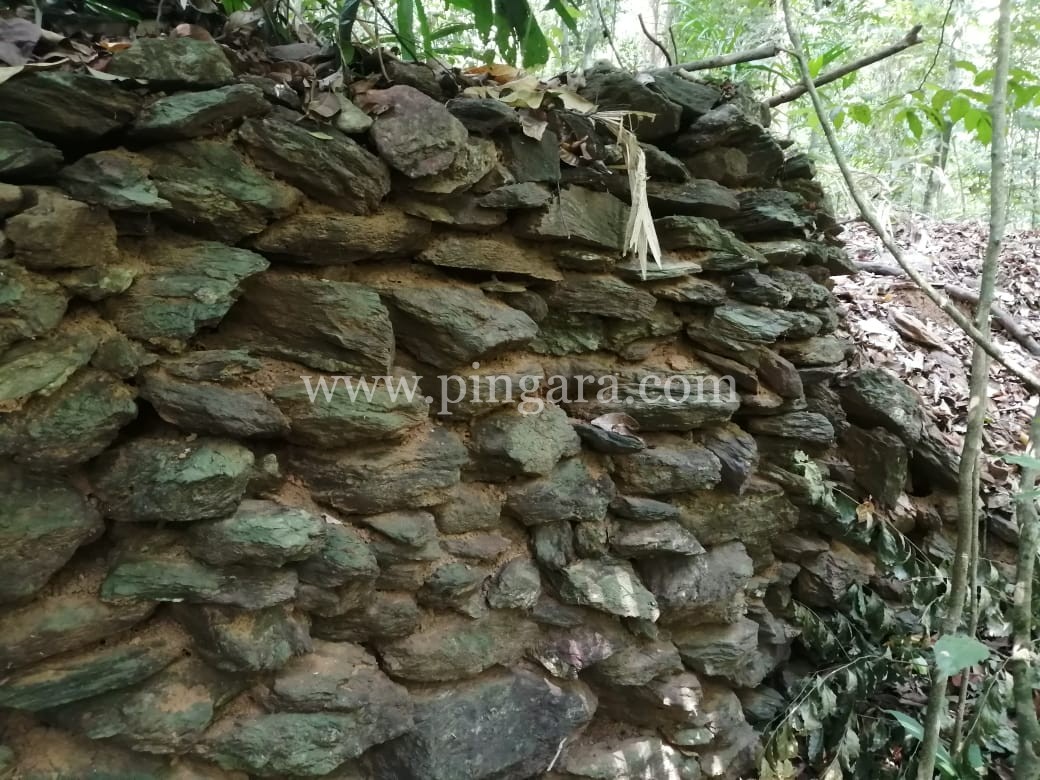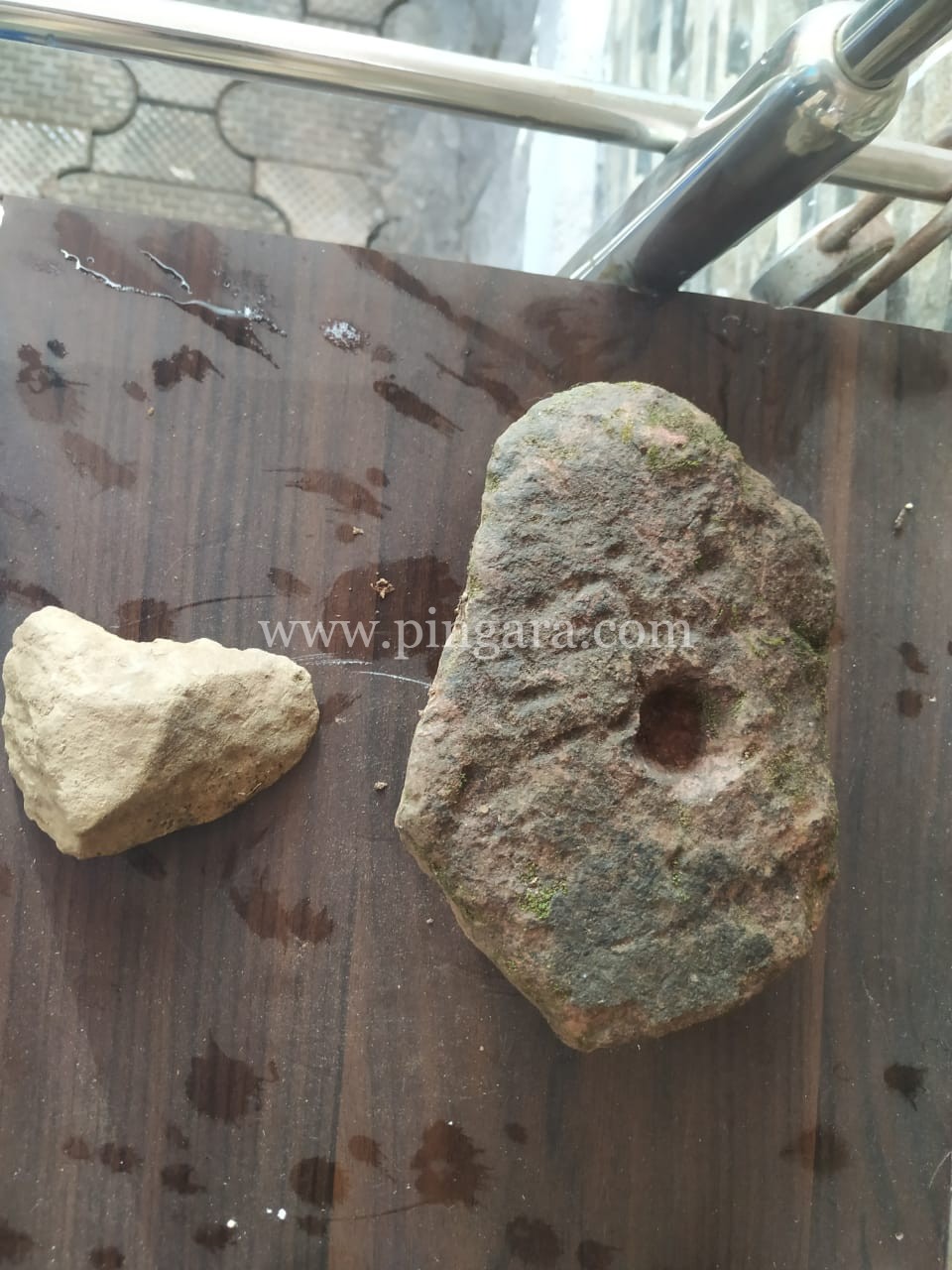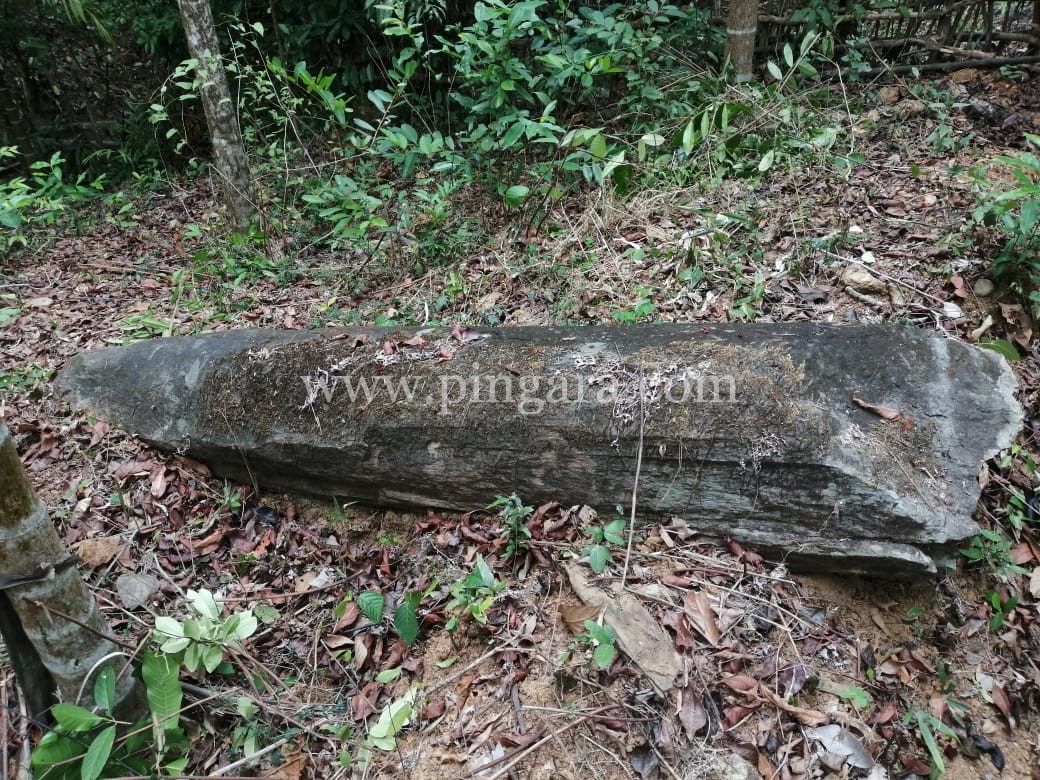A recent exploration at the foot hills of Mookasura Betta near kolluru, a Menhir, a cupule, a well, cut round shape in the hard laterite and potteries of a megalithic period has been discovered. The site is very near to Mookambika Temple of Kolluru, which is one of the famous pilgrimages of Shakta cult in India. The Menhirs are very familier in the adjacent Malnad region says Prof. T. Murugeshi, Associate Professor, Department of Ancient History & Archaeology, MSRS College, Shirva.

Fort of Mookasura
Mookasura hill has fort like structure’s, construted using undressed stones. Locals call it Mookasura’s fort or Mookasurana kote. Mookasura according to Indian mythology was a devil king who was killed by Devi in Kolluru to restore Dharma, hence she takes the name Kolluru Mookambika. The Menhir found at the foot of Mookasura hill is about 2.10 meter in hight, 0.55 meter in thicness, 0.65 merter in wedth at the bottom and 0.55 meter wedth at the tip. The Manhir is laying on the ground which originally seems to be oriented to the east. Adjecent to the Kolluru at the places like Baise, Nilskal and Heragal all in Hosanagara taluk nearly 40 Menhirs are reported by scholars. The place name baise is also quite interesting, it is a vernacular version of Samskrita word, ‘mahisha’ says Dr. A. Sundara.

Cupule
By this discovery antiquities of Kolluru Mookambika can be dated to 1000 B.C. or much earlier. Dr. A. Sundara dates Megalithic menhir culture of Nilskal, Baise and Heragal to c. 1200 – 1000 B. C. Prof. Murugeshi has already reported menhirs from Kurkal, Adkadakatte and Buddhanajeddu of the Udupi district and this one is seventh of its kind. This would be the beginning of the Megalithic culture of Kolluru region too says Prof. T. Murugeshi.
What is Menhir? 
Menhir
Menhirs are upright standing stones and slanting. They are installed in memory of a deceased and are usually found near the burrial site. They are usually made of granite stones and can be found in various heights between 1.5m to 3m, they are very heavy and weigh in tons. They locally known as Anekallu, Dibbanadakallu, Nilskallu, GarbiniyaraKallu and so on.
Murugeshi Turuvekere thankful to Murulidhar Hegde, Ramesh Anagalli, Chandra U. B. Gaddemane, Raghavendra Itala, Janardhana Achari and Bhaskar Nuksal of Kolluru for their help and support in the discovrey.
